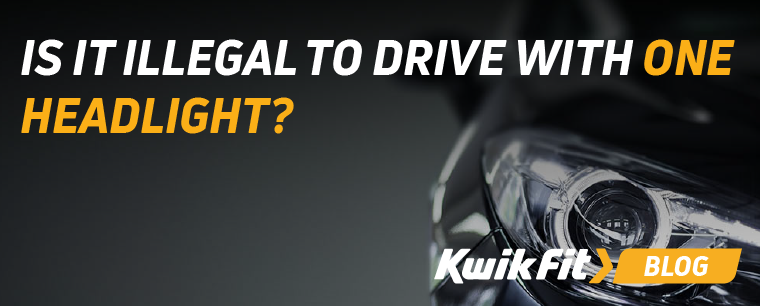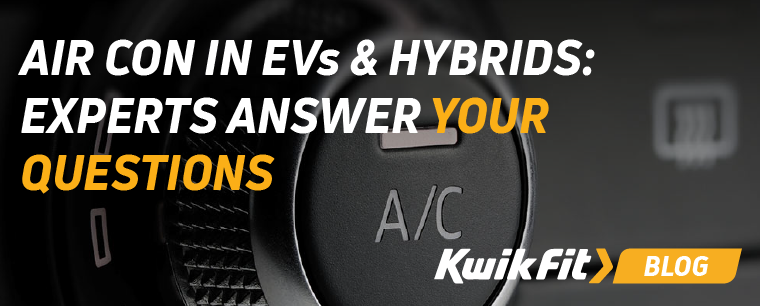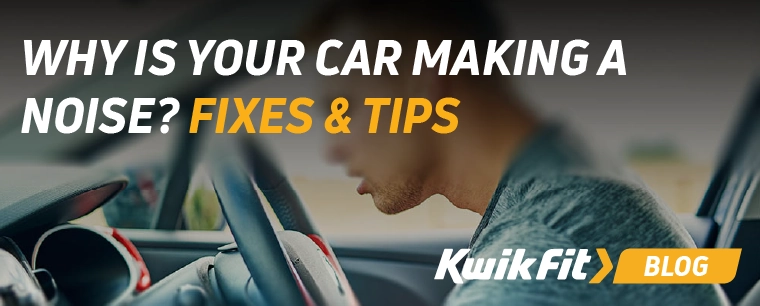Premium or Budget? Which Tyres Keep You Safer?
Jack Dreyer | Friday 30th June 2023 12:00pm

Have you ever asked yourself, “Which tyres are best?“
With so much choice and so many variables when it comes to buying new tyres, it pays to be informed. Our customers ask us time and again at Kwik Fit: “Why pay more for premium tyres when there’s a budget alternative?” In this article, we'll answer that question and help you make an informed decision the next time you’re buying tyres.
Are premium tyres worth the extra money?
The price difference can be significant, but before reaching what might seem an obvious conclusion and choosing cheaper tyres, it’s very important to understand exactly why premium tyres initially cost more, and how you benefit in the long term.
The answer lies in the huge sums manufacturers such as Continental invest each year in research and development, formulating and testing new compounds (the rubber), tyre tread patterns, and tyre structures. Professional test drivers, like Continental’s Scott Armstrong, put tyre prototypes through their paces in both real and simulated conditions, and if they don’t come up to scratch, the process starts over again.
The superiority of premium tyres is a view also shared by the world‘s automotive sector. All of the world’s car manufacturers put such a high value on the quality of tyres like Continental’s that many of them – from the ‘everyday‘ car makers to the glamorous ’supercar‘ marques – include these premium tyres with their vehicles when they leave the showroom.
And the result of such meticulous testing and serious investment? Simply put, Kwik Fit know that premium tyres are far, far safer and – in the long term – less expensive for you. Here’s a 1-2-3 of why.
1. Premium tyres are noticeably safer
One of the UK’s leading insurance companies, Direct Line, asked a variety of independent tyre industry experts to make the case for purchasing budget tyres. Not one would. This is simply because the experts believe premium tyres are critical for road safety.
Why? It’s because the low-grade rubber compositions typically used for budget tyres are not as effective at gripping the road in wet conditions, and this affects stopping distances. An ‘A rating’ for wet braking distance on the EU Tyre Label means the tyre is highly effective at gripping wet roads. Conversely – unless you live somewhere very dry – a tyre with an ‘F rating’ is best avoided.
The poorer ‘F rating‘ (typically found on budget tyres) indicates they could add as much as 18 metres when stopping in the wet at a speed of 50mph when compared to an A-rated tyre. We all know from experience that a lot can happen in 18 metres… and it can be a matter of life and death. Premium tyres – like the Continental PremiumContact 6 – typically receive the wet weather high A ratings, while budget tyres typically receive an F rating.
2. Premium tyres wear slowly
It’s true, a set of premium tyres will initially cost you more. For a city car, expect to pay around £15-30 more per tyre, or around £70-80 more for a larger family estate.
Although that is a larger initial outlay, it’s important to also consider the rate of tyre wear, which - thanks to the design and use of higher quality materials - is typically significantly slower for premium tyres. Slower tyre wear means you won’t have to change your tyres so often, saving you money and – just as importantly – time and inconvenience.
As with any other product, it generally works out cheaper in the long run to invest in a more durable option to start with.
3. Premium tyres are more fuel-efficient — and quieter too
Your tyre‘s quality and construction also affect fuel efficiency and the amount of CO2 your vehicle emits. The EU Tyre Label helps here, too. Typically, over the course of a year, premium tyres with an ‘A rating’ will save a massive 80 litres of fuel – or around £110 per year at current forecourt prices.
Add this cost year-on-year to that for buying multiple budget tyres, and you can start to see how budgets may not be the bargain choice they’re made out to be. Premium tyres can work out to be the less expensive option, with the added benefit of reduced greenhouse emissions and reducing your personal carbon footprint.

Premium tyres are also much quieter, which on our busy streets where traffic noise is an issue really matters. Premium tyres are designed to reduce external noise and keep you within current and future legal limits. They also make less noise inside your car, and we all know that a quieter tyre makes for a more pleasant driving experience, right?
Next steps to making an informed tyre choice
If you’re still unsure of whether premium or budget tyres are best for you and your car, Kwik Fit’s tyre professionals are happy to assist, able to offer you impartial advice and take you through all your tyre options.
For ultimate peace of mind, every tyre we fit comes with a lifetime mileage warranty. Locate your nearest Kwik Fit tyre centre or contact us directly to start your tyre journey today.
Any facts, figures and prices shown in our blog articles are correct at time of publication.
Featured Articles
Is it Illegal to Drive With One Headlight?
Saturday 19th July 2025
Wondering if it’s illegal to drive with one headlight? Learn about the safety risks and penalties of illegal blown bulbs and why you should fix them promptly.
Air Con in EVs & Hybrids: Experts Answer Your Questions
Monday 30th June 2025
Does air con drain EV batteries? Can you use the air con while charging an electric car? Find out the answers to these questions & more from Kwik Fit’s experts.
Why Is Your Car Making a Noise? Fixes & Tips
Friday 13th June 2025
When your car starts making unexpected noises, it can certainly be quite disconcerting; it may be nothing to worry about, but here’s what you need to know.









